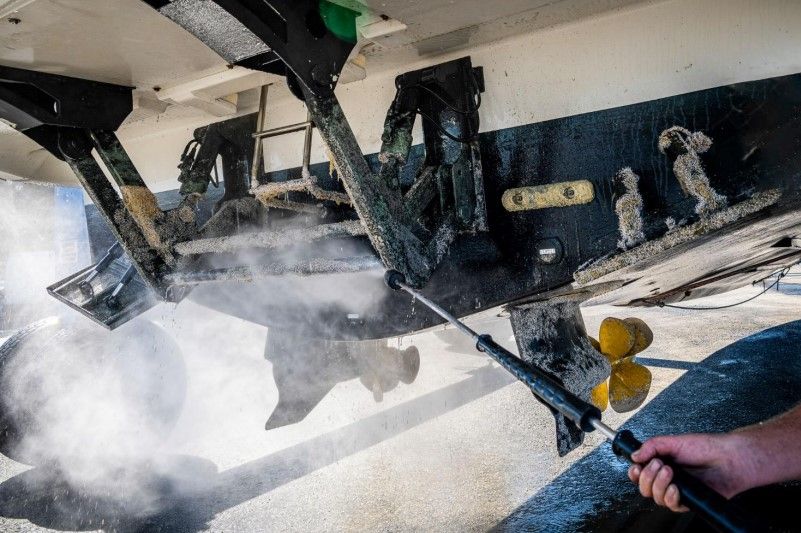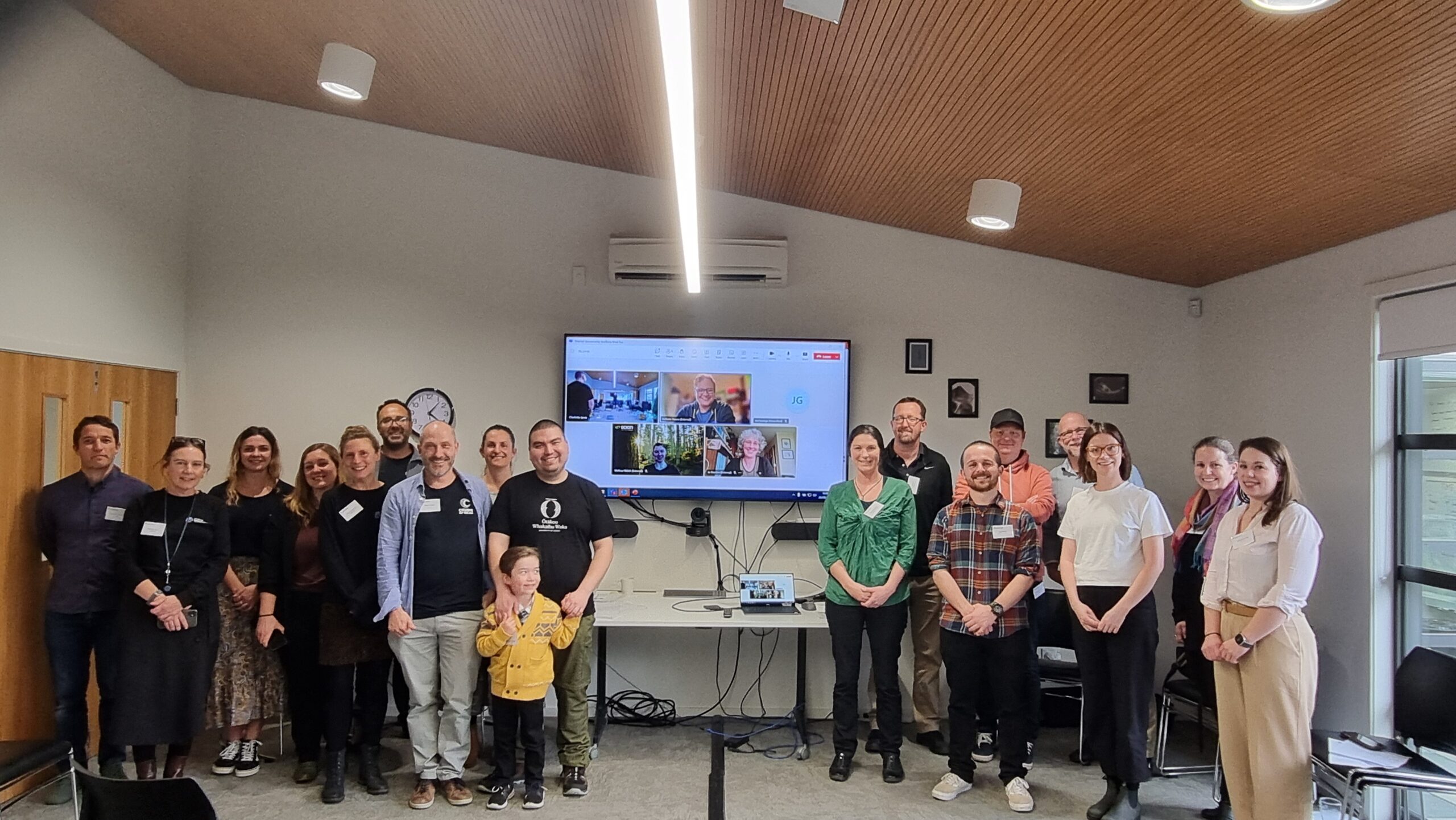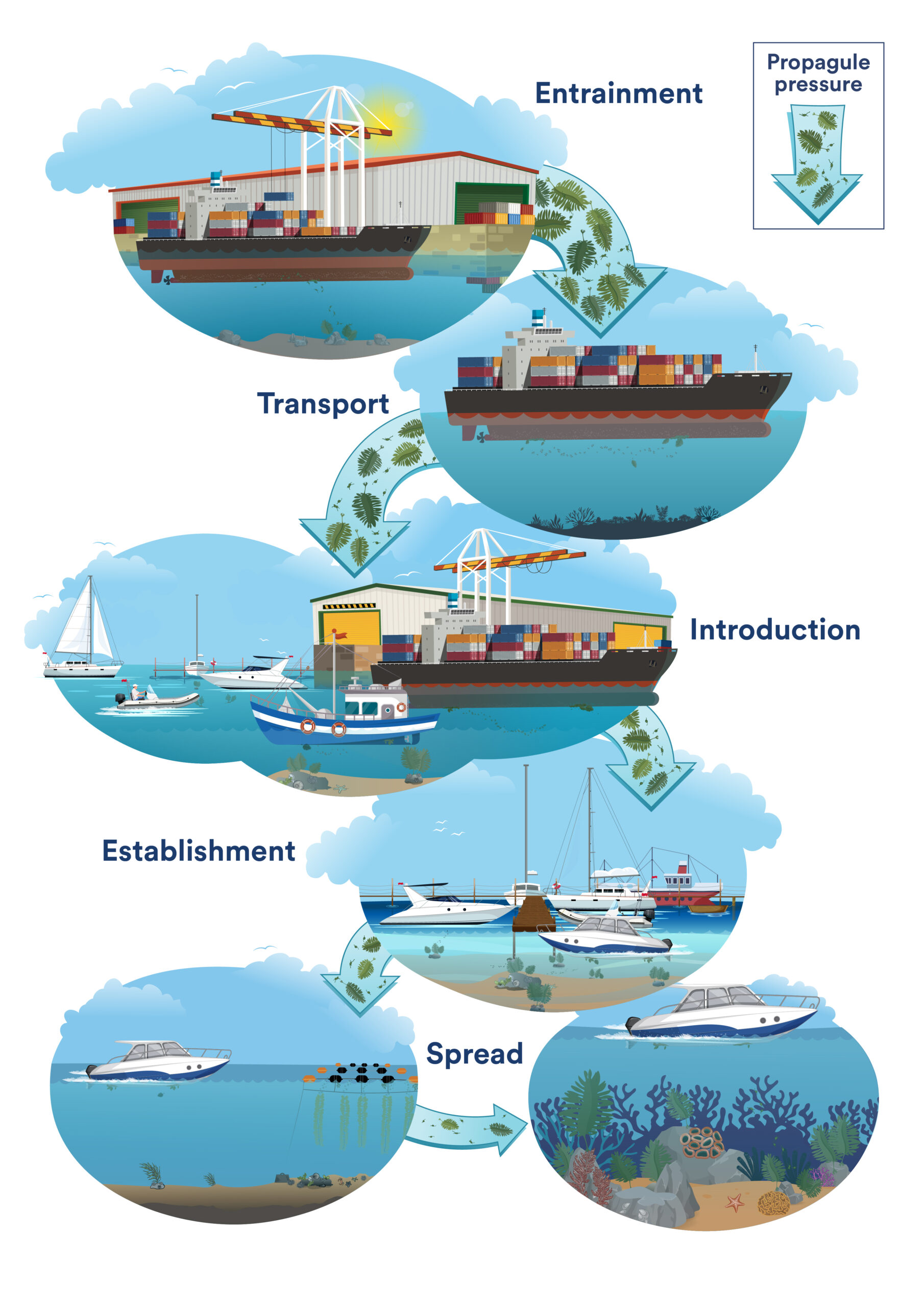Last year over 700 boat owners who have non-trailered boats moored in marinas around Aotearoa…
Biological control (biocontrol) in our marinas – making it a reality
By Grant Hopkins
Recruiting nature to keep marine pests off our marina, wharf and marine farm infrastructure while us humans go about our daily routines sounds a little fanciful – but can we make it a reality?
Earlier work by Cawthron scientists involved in the Marine Biosecurity Toolbox Programme has shown that the idea has merit, but there are a couple of sticking points that need to be addressed before we can hang up our rudimentary pest management tools!
Firstly, how many ‘agents’ do we need to deploy to keep the pests at bay, and is there enough food for them to get through the leaner winter months? Secondly, how do we stop the deserters – the ones that get to the edge of the pontoon and don’t stop, or those that simply fall off to the seabed below?

Extensive biofouling communities develop during summer months – but will winter be the same?
These are the questions that have been rolling around in my head for the past few years but now we’re getting much closer to finding the answers. Over summer and winter months, we have been collecting biofouling samples – from a thin layer of slime to advanced communities that gives boat owners (and MPI inspectors!) nightmares. This work will finish this winter, and we will then analyse the samples to see how nutritious the ‘rations’ are. Once we know this, we can match the food requirements with the agents’ dietary requirements and hopefully come up with a stocking approach that a farmer would be proud of.
Over the same period, we have let our marine technicians loose on designing ways to stop our armies leaving their post. This process has been iterative – some of the earlier designs resembled art projects my kids came home from day care with – but this was all part of the learning. We haven’t explored all avenues yet, but one design has shown great promise. I like to think it was inspired by one of the Japanese obstacle courses. Check out our video to see how it works! We aren’t far away from field testing (the big moment of truth), and if it works, we need to refine the approach to meet our performance criteria (i.e. be cost-effective, environmentally-friendly, aesthetically pleasing, safe for the public, and of course very effective).
Stay tuned!




Comments (0)